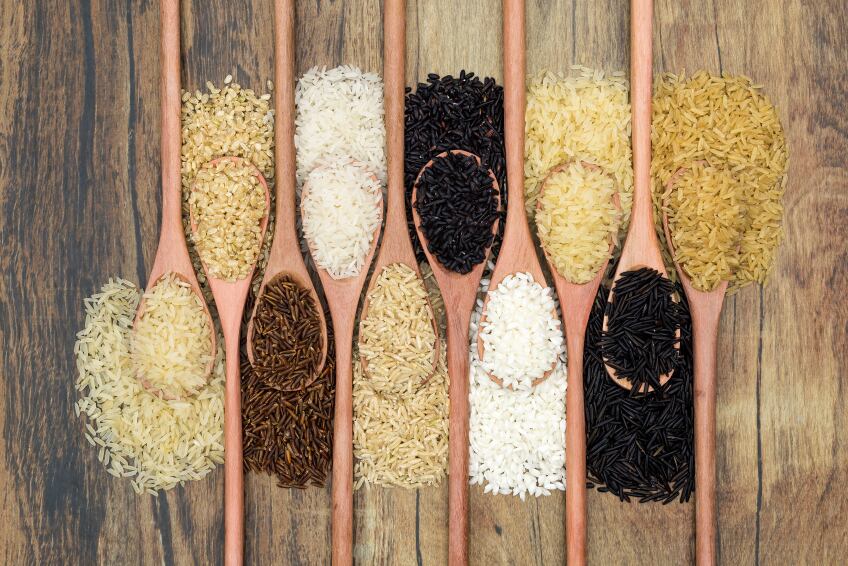A University of Sheffield study has demonstrated that a significant proportion of rice sold through UK supermarkets contains levels of arsenic above European Commission regulations governing rice meant for infants and young children.
The research, published in the journal Ecotoxicology and Environmental Safety, is the first to measure differences in human health risks from arsenic using a 'substantial' number of rice varieties marketed in the UK. It found 28 out of 55 rice samples contained more than 0.10 mg of arsenic per kilogram of dry uncooked weight.
A call for warning labels: ‘Enable families to make informed food choices’
Up to 90% of UK households buy rice, with the average person consuming around 100g per week.
Rice and rice-based products are widely used for weaning and as baby food, due to their nutritional benefits and relatively low allergic potential. But, according to the European Food Safety Authority, children are two-to-three times more susceptible to arsenic risks than adults due to their lower body weight.
Arsenic is classified as a Group 1 carcinogen by the International Agency for Research on Cancer and exposure has been linked to the development of skin, lung and bladder cancers.
Studies have also linked high chronic exposure with adverse health effects in multiple organ systems including the stomach, kidneys, liver, and in coronary heart disease and diabetes.
“Arsenic… is a carcinogen and poison… Inorganic arsenic is included in the list of top ten chemicals, or group of chemicals, of significant public health concern by the World Health Organisation,” Dr Manoj Menon, environmental soil scientist and lead author of the study, told FoodNavigator.
“Rice products are often considered a safe option for babies and young children, but our research suggests that for more than half of the rice we sampled, infants should be limited to just 20g per day to avoid risks associated with arsenic."
Dr Menon called on regulators to introduce a warning label alerting parents to the dangers of feeding young children rice. “The government and the European Commission must introduce labelling to warn people of arsenic levels in rice to enable families to make informed food choices.”
Maximum levels of inorganic arsenic in foodstuffs as detailed in Commission regulation (EU) 2015/1006 amending Regulation (EC) No 1881/2006
Brown and organic contain higher arsenic levels
Arsenic is a metal element that is naturally present in water, air and soil. It is absorbed by some food crops as they grow.
Arsenic is found in many foods including grains, fruits and vegetables. It is also found in seafood, but this is the less toxic organic arsenic. Rice is estimated to accumulate ten times more arsenic than other cereals.
Rice is typically grown in submerged conditions or flooded soil. Under these anoxic conditions, that are depleted of dissolved oxygen, arsenic is ‘more mobile’ and available to be taken up by the rice plant, Dr Menon explained.
“It can enter the food chain through food and water… If we use arsenic contaminated water to irrigate rice (rice requires 2500 litres of water to produce 1 kg of rice), then rice will be contaminated.”
The research showed that brown rice contained higher levels of the carcinogen than white or wild rice because it includes the bran – the outer layer of the grain. “It is well-established fact that bran has more arsenic than the inner white part of the rice grain (endosperm), hence more arsenic in brown rice. White rice is produced by removing the bran (polishing) so it has less arsenic than the brown (unpolished rice),” Dr Menon told this publication.
Meanwhile, organically grown rice was found to contain ‘significantly higher levels’ than non-organic rice.
“Our hypothesis is that when organic fertilizers are used in organically produced rice they are likely to make soil more anoxic which is the likely reason for higher arsenic in organic rice. We need more work on this,” the soil scientist explained.
Source
'Do arsenic levels in rice pose a health risk to the UK population?'
Ecotoxicology and Environmental Safety
DOI: https://doi.org/10.1016/j.ecoenv.2020.11060
Authors: Manoj Menon, Binoy Sarkar, Joseph Hufton, Christian Reynolds, Saul Vazquez Reina, Scott Young


